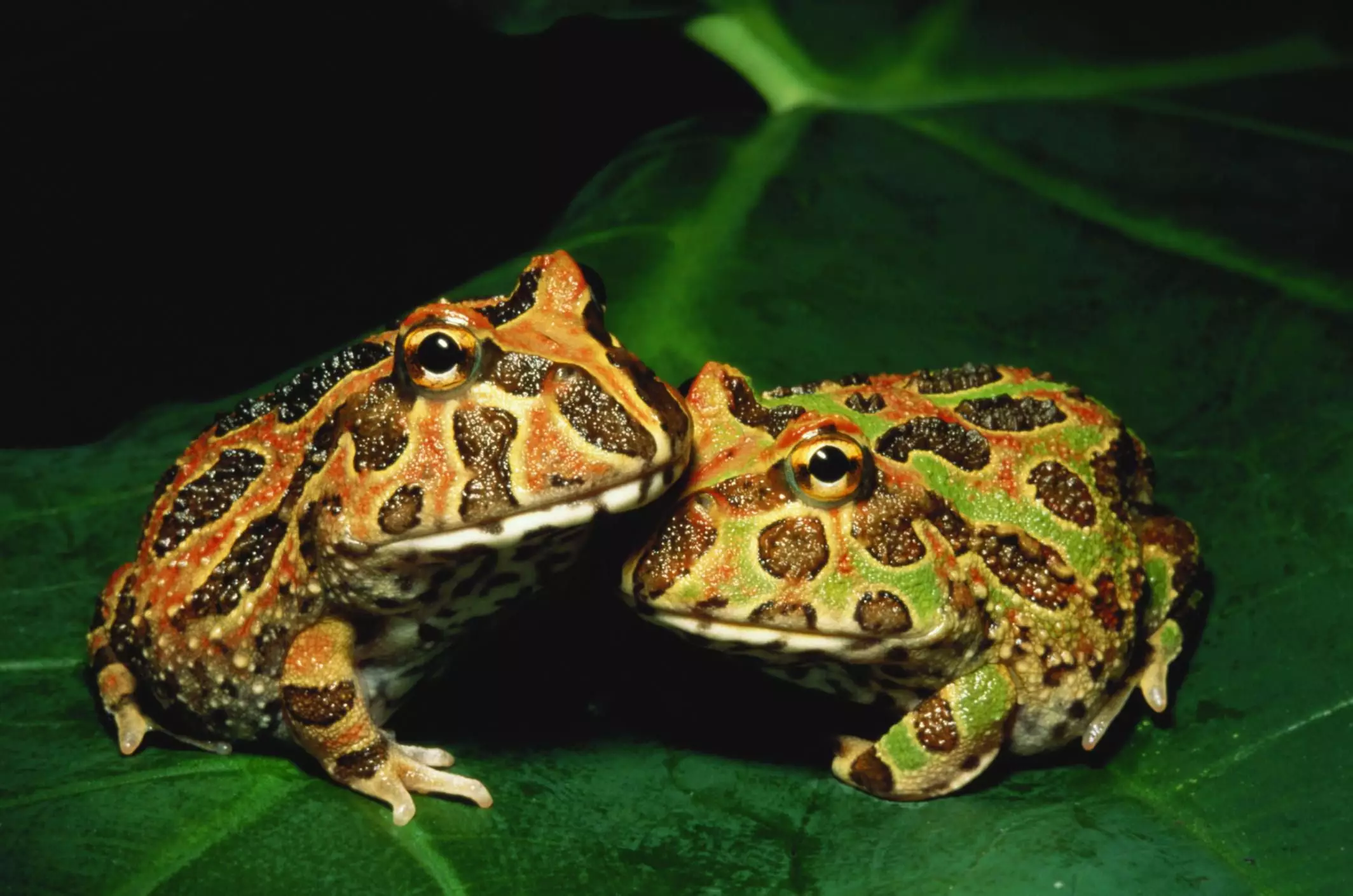Pacman frogs, scientifically known as *Ceratophrys ornata*, are captivating creatures that originate from the lush landscapes of South America. Their unique aesthetics, characterized by a rounded body and an impressively wide mouth, grant them the playful nickname “Pacman frog,” inspired by the iconic video game character known for devouring everything in its path. Although these frogs have captured the imagination of many pet owners, their care requirements and behavioral traits often go underappreciated.
Unlike many amphibians that thrive in aquatic environments, Pacman frogs are terrestrial, spending their days nestled in moist leaf litter rather than swimming. This preference for a humid atmosphere makes them a wonderful species for those enamored with nature but not necessarily looking for a pet that engages in high-energy antics.
Adult Pacman frogs typically grow to about six inches long; interestingly, they boast a body structure that is nearly as wide as they are long. While males tend to be smaller, females often exceed their male counterparts in size. Their docile temperament is complemented by their vivid coloration, which serves as a striking visual appeal for collectors and enthusiasts alike.
Despite their somewhat intimidating size in proportion to their environment, these frogs are not aggressive pets. However, they can display a defensive bite if threatened, much like their wild relatives. This attribute can be surprising to those unacquainted with amphibian behavior; understanding their instincts is crucial for proper care.
Creating an appropriate habitat for a Pacman frog is relatively straightforward due to their low activity levels. A 20-gallon tank suffices for one frog, provided it is not overcrowded, as Pacman frogs are known to exhibit predatory behaviors—even towards their tank mates. The enclosure should be carefully maintained with a focus on humidity and temperature to ensure the well-being of your pet; ideal humidity levels range from 50% to 80%.
To achieve this, the tank can be lined with smooth rocks or paper, paired with a layer of moss or leaf litter for burrowing and hiding. Daily misting is essential to keep the humidity levels stable. Additionally, introducing a water dish filled with shallow water allows for hydration and a comfortable resting place. Consider placing the dish in a warmer section of the tank to prevent the water from cooling excessively.
Temperature regulation is equally important. A daytime temperature of around 82 degrees Fahrenheit, dropping to about 78 degrees at night, will mimic their natural environment. Under-tank heating pads are recommended, as overhead heat sources can create overly dry conditions.
When it comes to feeding, Pacman frogs are renowned for their indiscriminate appetites. In the wild, they are opportunistic feeders, happy to consume anything that crosses their path. In a domestic setting, smaller juveniles can be fed crickets, mealworms, and waxworms, while adults may enjoy pinky mice, guppies, and larger insects.
Feeding frequency varies: smaller frogs should be fed daily, while adults can be provided with meals every few days. Observing your frog’s body condition is the best guiding principle; if they appear on the heavier side, adjust their feeding schedule accordingly.
Maintaining a clean habitat is imperative for the health of your Pacman frog. Regular cleaning and water changes help prevent health issues such as bacterial infections, which can manifest as redness or swelling. Additionally, Pacman frogs can face challenges related to humidity, with respiratory infections being a risk if conditions are not properly managed.
Selecting the right Pacman frog is critical to ensuring a successful ownership experience. Look for vibrant, alert individuals with clear eyes and healthily pigmented skin. Perform due diligence by observing the frog’s eating habits before purchase; a healthy frog typically shows little hesitation to feed.
It’s best to acquire Pacman frogs from reputable breeders, as captive-bred specimens are less likely to carry parasites or other health issues that afflict wild-caught individuals. Understanding these fundamental aspects of Pacman frog care can help cultivate a rewarding relationship between you and your new pet.
While Pacman frogs might not suit those seeking interactive, hands-on pets, they certainly provide a unique charm and delight for amphibian enthusiasts. Their relatively simple care requirements and fascinating behaviors make them an intriguing addition to any exotic pet collection. By investing time in understanding their needs and observing their natural behaviors, owners can foster a fulfilling environment for their amphibious companion to thrive.

